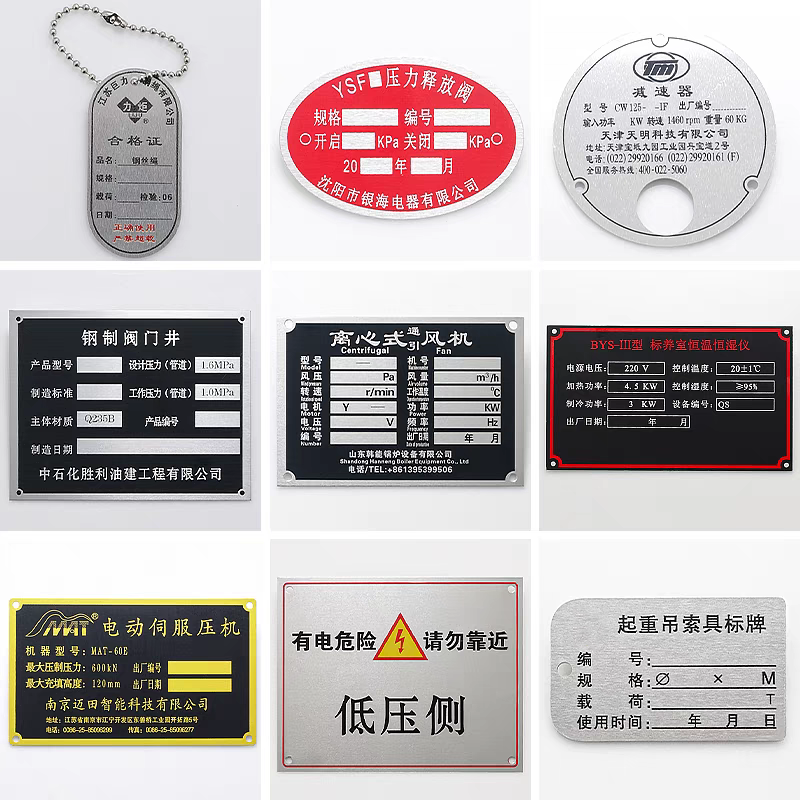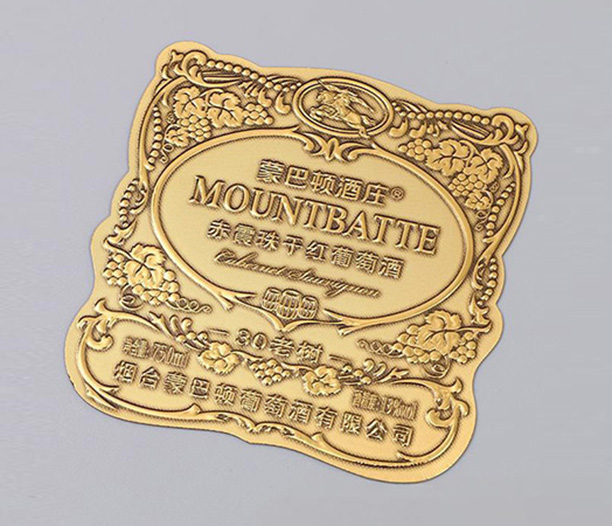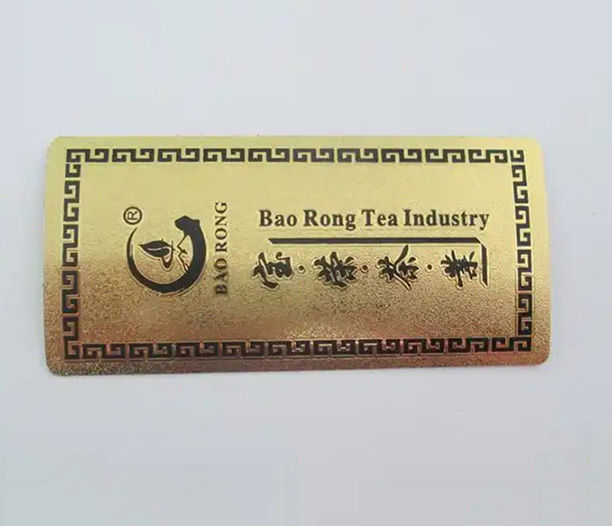When it comes to adding a personal touch to your woodworking projects, few elements are as impactful as woodworking name plates. These small yet significant details can transform a simple piece into a cherished item, whether it's a handmade gift, a custom furniture piece, or a professional signage solution. In this article, we'll dive into the essentials of woodworking name plates, covering everything from design choices to practical applications. If you're a DIY enthusiast, a hobbyist, or someone looking to incorporate these plates into your work, you'll find valuable insights to help you make informed decisions.

What Are Woodworking Name Plates?
Woodworking name plates are customized plaques or labels made from wood, often engraved or carved with names, dates, logos, or other text. They serve as identifiers, memorials, or decorative elements in various settings, such as home decor, office spaces, or handmade crafts. Unlike metal or plastic alternatives, woodworking name plates offer a warm, natural aesthetic that blends seamlessly with wooden projects. They can be used on desks, doors, gifts, or even as standalone art pieces, providing a timeless appeal that resonates with craftsmanship and tradition.
The beauty of woodworking name plates lies in their versatility. They can be simple and rustic or intricate and modern, depending on the wood type, finish, and engraving technique. For instance, a hand-carved name plate on a wooden jewelry box adds a personal touch, while a laser-engraved version on an office door conveys professionalism. As you explore this niche, you'll discover that woodworking name plates are more than just labels—they're a way to tell a story and celebrate individuality.
Types of Woodworking Name Plates for Different Projects
Not all woodworking name plates are created equal. Understanding the different types available can help you choose the right one for your needs. Broadly, they fall into categories based on design, function, and customization level.
First, there are engraved woodworking name plates, which involve cutting text or patterns into the wood surface. This can be done manually with chisels or using modern tools like CNC routers or laser engravers. Engraved plates are durable and offer a classic look, making them ideal for heirlooms or professional use. Then, we have painted or stained name plates, where the design is applied on the surface. These are great for adding color and vibrancy, especially in children's rooms or artistic projects.
Another type is the relief-carved name plate, where the background is carved away to leave the text raised. This 3D effect adds depth and texture, perfect for decorative pieces like wall hangings or commemorative plaques. Additionally, there are modular woodworking name plates that allow for interchangeable parts, such as slots for inserting new names or dates. This flexibility makes them suitable for events like weddings or corporate functions where details might change.
When selecting a type, consider the project's purpose. For outdoor use, like garden signs, you'll need weather-resistant woodworking name plates treated with sealants. Indoor projects, such as bookcase labels, can focus more on aesthetics. By matching the type to your application, you ensure that your woodworking name plates not only look good but also stand the test of time.
Materials Used in Crafting Woodworking Name Plates
The material choice plays a crucial role in the durability, appearance, and cost of woodworking name plates. Common woods include hardwoods like oak, maple, and walnut, which are known for their strength and fine grain. These are excellent for high-end projects where longevity is key, such as office name plates or family crests. Oak, for example, offers a robust base that holds intricate engravings well, while maple provides a lighter tone that suits modern designs.
Softwoods like pine or cedar are also popular for woodworking name plates, especially in DIY settings. They're easier to work with using basic tools and are more affordable, making them ideal for beginners or bulk orders. However, they may require additional finishing to prevent dents or moisture damage. Beyond solid wood, composite materials like MDF (medium-density fiberboard) or plywood can be used for painted name plates, as they offer a smooth surface but lack the natural grain appeal.
Finishes are another aspect to consider. Oils, varnishes, or lacquers can enhance the wood's natural beauty and protect it from wear. For a rustic look, you might opt for a distressed finish, while a high-gloss coat can give woodworking name plates a polished, professional appearance. Remember, the material not only affects the look but also the engraving process—softer woods might allow for deeper cuts, while harder woods require precision tools.

Designing Your Woodworking Name Plates: Tips and Ideas
Design is where creativity shines in woodworking name plates. Start by considering the font and layout. Serif fonts like Times New Roman convey tradition, making them suitable for formal name plates, while sans-serif options like Arial offer a clean, modern feel. For a personalized touch, incorporate symbols, borders, or even small illustrations that reflect the project's theme, such as nature motifs for a garden sign or geometric patterns for contemporary decor.
Size and shape are equally important. A large, rectangular woodworking name plate might work well as a desk nameplate in an office, whereas a small, circular one could be perfect for labeling keys or gifts. Don't forget about color—natural wood stains highlight the grain, while paints can match room decor. If you're creating multiple woodworking name plates, consistency in design helps maintain a cohesive look, such as using the same wood type and font across a series.
When designing, think about readability and practicality. Ensure the text is legible from a distance, and avoid overcrowding the plate with too much information. For DIY projects, sketch your design on paper first or use digital tools to visualize it. Many online resources offer templates for woodworking name plates, which can save time and inspire new ideas. Ultimately, a well-thought-out design transforms a simple plate into a meaningful addition to your woodworking portfolio.
Tools and Techniques for Creating Woodworking Name Plates
Crafting woodworking name plates requires a blend of traditional and modern tools. For handcrafted approaches, basic woodworking tools like chisels, gouges, and mallets are essential for carving. This method allows for unique, artisanal results but demands skill and patience. If you're new to woodworking, start with simpler techniques like pyrography (wood burning), which uses a heated tool to etch designs onto the surface. It's affordable and forgiving for beginners.
For more precise and repeatable results, power tools come into play. A router with engraving bits can create clean, deep cuts in woodworking name plates, while a scroll saw helps in shaping intricate outlines. Laser engravers have revolutionized this field, enabling detailed designs with computer accuracy. They're ideal for mass production or complex patterns, though they require an initial investment. Similarly, CNC machines can automate the carving process, ensuring consistency across multiple plates.
Techniques vary based on the desired outcome. Relief carving involves removing background material to raise the design, whereas intaglio carving cuts into the wood for a recessed effect. Sanding and finishing are critical steps—smooth the surface with progressively finer grits of sandpaper, then apply a sealant to protect against moisture and UV rays. If you're adding color, use wood stains or acrylic paints that complement the wood's character. By mastering these tools and techniques, you can produce professional-grade woodworking name plates that impress every time.
Cost Factors and Budgeting for Woodworking Name Plates
The cost of woodworking name plates can range from a few dollars for a basic DIY project to hundreds for custom, high-end pieces. Key factors include material choice, complexity of design, and production method. For instance, hardwoods like mahogany will cost more than pine, but they offer greater durability and a premium look. Similarly, hand-carved woodworking name plates tend to be pricier due to the labor involved, whereas laser-engraved options might be more affordable for bulk orders.
Size and quantity also impact the price. Larger plates require more material and time, driving up costs, while ordering in bulk often reduces the per-unit price. If you're outsourcing to a craftsman, expect to pay for expertise and customization—this can include special fonts, logos, or intricate patterns. DIY approaches save money but require an investment in tools and materials upfront. For example, a basic set of carving tools might cost $50-$100, but it allows you to create multiple woodworking name plates over time.
To budget effectively, define your project's scope. For a one-off gift, you might splurge on a premium wood, but for multiple identical plates, consider cost-effective materials like MDF. Compare prices from different suppliers if you're buying pre-made woodworking name plates, and don't forget to factor in finishing products like varnishes or mounting hardware. By planning ahead, you can achieve beautiful results without breaking the bank, whether you're making woodworking name plates for personal use or as part of a business.
Where to Use Woodworking Name Plates in Everyday Life
Woodworking name plates are incredibly versatile and can enhance various aspects of daily life. In home settings, they're perfect for personalizing rooms—think of a child's name plate on their bedroom door or a family surname plaque by the entrance. They also make thoughtful gifts, such as engraved name plates for wedding favors or retirement mementos, adding a handmade touch that store-bought items can't match.
In professional environments, woodworking name plates lend a touch of elegance to offices. Use them as desk nameplates, door signs, or awards to recognize employees. They convey a sense of permanence and care, which can boost a company's image. For workshops or studios, these plates can label tools, storage bins, or artwork, helping to organize spaces while maintaining an artistic flair. Even in retail, woodworking name plates serve as attractive price tags or product identifiers in boutiques.
Outdoor applications include garden markers with plant names or address signs for homes. Ensure these are made from weather-resistant woods and sealed properly to withstand the elements. The key is to align the plate's style with its purpose—a rustic woodworking name plate might suit a farmhouse, while a sleek design fits a modern apartment. By integrating them into various contexts, you'll see how woodworking name plates blend functionality with artistry, making everyday items feel special.
Maintaining and Caring for Your Woodworking Name Plates
To keep your woodworking name plates looking their best, regular maintenance is essential. Start by dusting them with a soft cloth to prevent buildup that can dull the surface. For deeper cleaning, use a damp cloth with mild soap, but avoid soaking the wood, as excess moisture can cause warping or mold. If your woodworking name plates are outdoors, inspect them periodically for signs of weathering, such as fading or cracks, and reapply sealant as needed—typically every year or two.
Protect them from direct sunlight and extreme temperatures, which can accelerate wear. If the plate has a finish, like varnish, you might need to touch it up over time to maintain its shine. For engraved woodworking name plates, a soft brush can help remove debris from the grooves without damaging the design. If you notice scratches, a light sanding and re-staining can restore the appearance. By following these simple steps, your woodworking name plates will remain vibrant and durable for years, preserving the memories and messages they carry.
In conclusion, woodworking name plates are a delightful way to add personality and professionalism to any project. From choosing the right materials to mastering techniques, each aspect offers opportunities for creativity. Whether you're crafting them yourself or sourcing from artisans, these plates embody the spirit of woodworking—blending art with utility. So, next time you embark on a woodworking journey, consider how a custom name plate could elevate your creation.
Frequently Asked Questions About Woodworking Name Plates
Q1: What are the most common woods used for woodworking name plates?
A1: The most common woods include oak, maple, pine, and walnut. Oak and maple are favored for their durability and fine grain, making them ideal for engraved woodworking name plates, while pine is a cost-effective option for beginners or painted designs.
Q2: How can I attach a woodworking name plate to a surface without damaging it?
A2: You can use adhesive options like wood glue or double-sided tape for lightweight plates, or screws and mounting brackets for heavier ones. For temporary placement, consider removable adhesives, and always pre-drill holes if screwing into wood to prevent splitting.
Q3: Can woodworking name plates be used outdoors?
A3: Yes, but they require weather-resistant treatments. Choose woods like cedar or teak that naturally resist moisture, and apply a waterproof sealant. Regular maintenance, such as reapplying sealant annually, will help outdoor woodworking name plates last longer.
Q4: What tools do I need to make DIY woodworking name plates?
A4: Basic tools include chisels for carving, a wood burning kit for etching, or a router for engraving. For more precision, consider a laser engraver or CNC machine. Sandpaper, stains, and brushes for finishing are also essential to complete your woodworking name plates.
Q5: How much does a custom woodworking name plate typically cost?
A5: Costs vary widely based on size, material, and complexity. A simple DIY plate might cost $5-$20 in materials, while a professionally made custom woodworking name plate can range from $30 to $200 or more. Bulk orders often reduce the per-unit price.
By addressing these common queries, we hope you feel more confident in exploring the world of woodworking name plates. If you have more questions, share them in the comments below—we'd love to hear about your projects!






